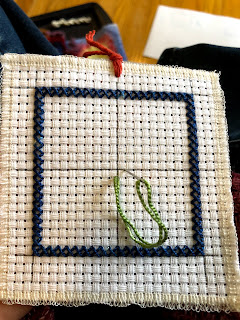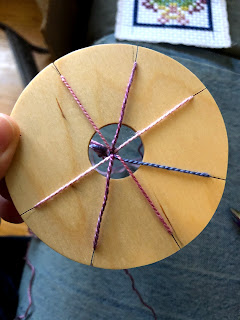




























and it was only fair that we do something special together, since he had to be so quiet all week while I was on Zoom all day long in my training!


In all honesty, lots of bonus projects were also shared with us. It is so so temptingly easy to post a video to Google Classroom! But since I went right from this training week into opening up our school in-person on March 1st, had to focus on adapting to an Outdoor Classroom, and taught up until the week before my new training session began, I didn't do any of the extras.
extra project ideas & videos included:
collaborative knitted & crocheted farmyard (each student does a square)
knitted & crocheted garden with bunnny & carrot
mini knitted farmyard with sheep finger puppet
sheep shearing shadow puppet show with marionettes
how to tie a heart-shaped Celtic knot
self-striping rainbow ball
instructions for mordanting cellulose fiber
beeswax wood finish recipe
watercolor painting tutorials
eco-dyed yarn experiments for families to do at home during COVID (mordanted yarn, dyestuff, water, glass pie dish, bake in oven at 400 degrees for 30 minutes)
more ideas for fun & fine motor things to do at-home during COVID- block beeswax crayon "weaving" plaid with warp & weft
- assembling paper quilts with pieces of various patterns
- trick apple slicing
- peeling an orange peel to match the f-hole on a violin
- making a tiny goblet out of a metallic chocolate wrapper
"the flagon with the dragon holds the brew that is true!
or was it the chalice from the palace?" - folding an 8 page mini book from a single sheet of paper
- ladle levitation



















 Immersive Experience
Immersive Experience Immersive Experience
Immersive Experience